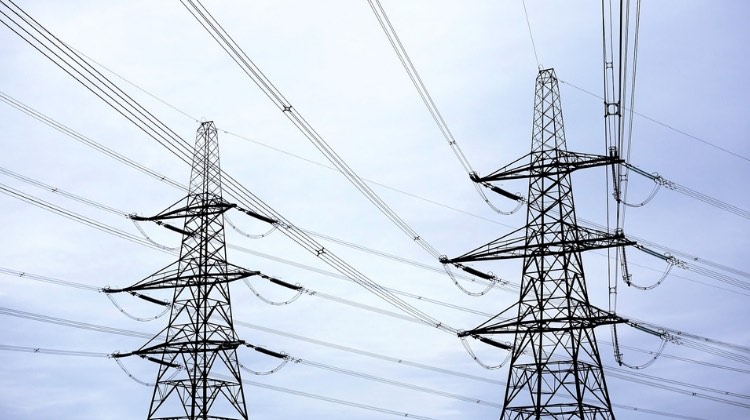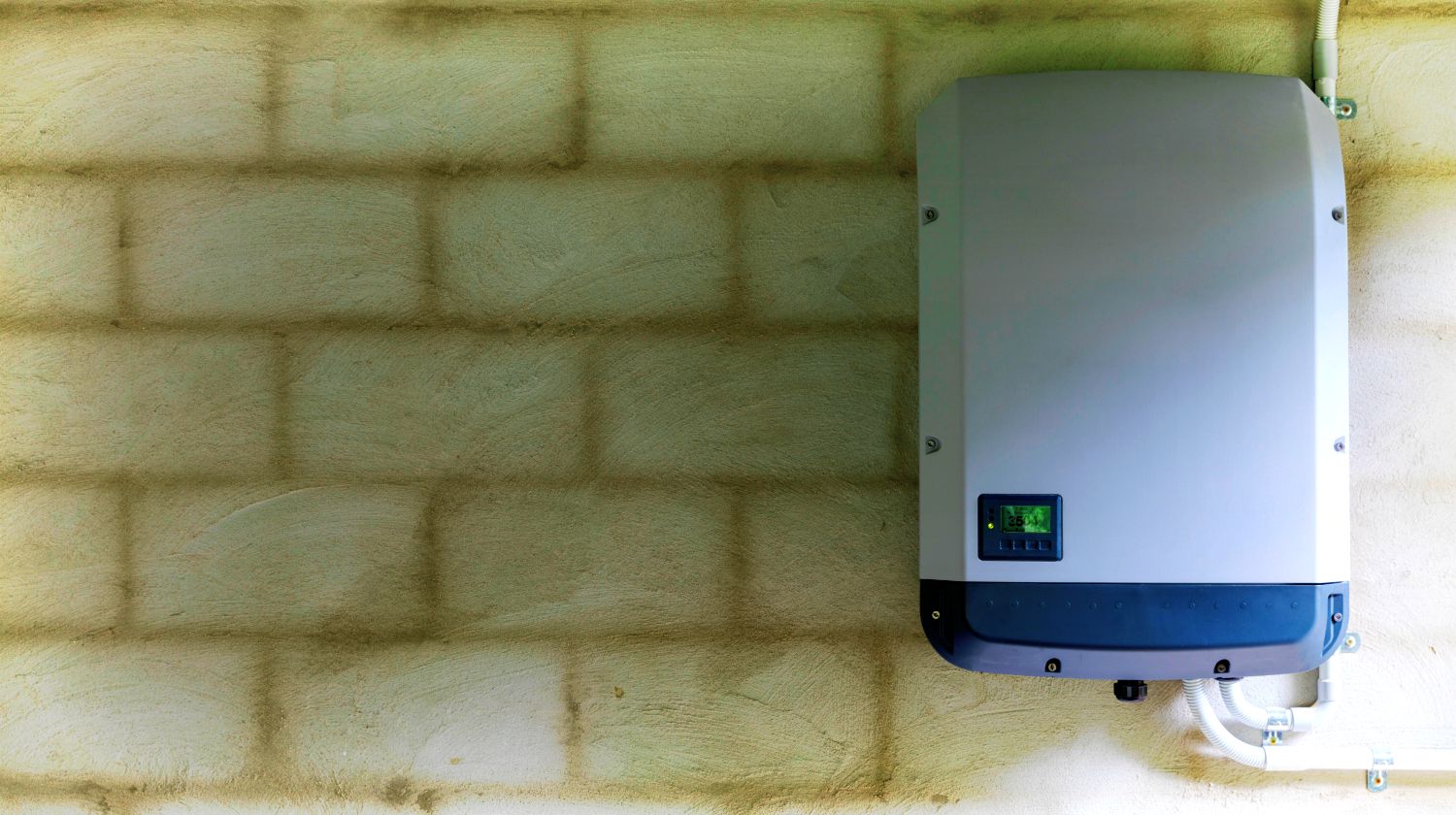Emerging Threats
Power Grid Attack: Not Just Possible, But Likely

If an adversary of this country has as its goal inflicting maximum damage and pain on the largest number of Americans, there may not be a more productive target than one of our electric power grids.
Electricity is what keeps our society tethered to modern times. There are three power grids that generate and distribute electricity throughout the United States, and taking down all or any part of a grid would scatter millions of Americans in a desperate search for light, while those unable to travel would tumble back into something approximating the mid-nineteenth century.
Power Grid Attack: Not Just Possible, But Likely
The very structure that keeps electricity flowing throughout the United States depends absolutely on computerized systems designed to maintain perfect balance between supply and demand. Maintaining that balance is not an accounting measure, it is an operational imperative. The point needs to be restated: for the grid to remain fully operational, the supply and demand of electricity have to be kept in perfect balance.
It is the Internet that provides the instant access to the computerized systems that maintain that equilibrium. If a sophisticated hacker gained access to one of those systems and succeeded in throwing that precarious balance out of kilter, the consequences would be devastating.
We can take limited comfort in the knowledge that such an attack would require painstaking preparation and a highly sophisticated understanding of how the system works and where its vulnerabilities lie. Less reassuring is the knowledge that several nations already have that expertise, and—even more unsettling—that criminal and terrorist organizations are in the process of acquiring it.
It would be comforting to report that those agencies charged with responding to disaster are adequately prepared to deal with the consequences of a cyberattack on the power grid. They are not.
For all the warnings from high-ranking members of the military and intelligence establishments, and despite the known vulnerabilities of the transformers critical to the viability of the grid, there remains a determination among many government officials to stress the grid’s resilience. They invariably cite as evidence the manner in which electric power has been restored in the wake of one natural disaster after another. Absent a crippling example to the contrary, the presumed consequences of a cyberattack on a power grid are bundled into the same general category as blizzards, floods, hurricanes, and earthquakes.
On one level, this is understandable and even prudent. Experience is a more compelling instructor than speculation. Indeed, negative experience, such as that accumulated by the Federal Emergency Management Agency during the aftermath of Hurricane Katrina in New Orleans, can be especially instructive. FEMA is a far better-led organization today than it was in 2005. That’s the good news. FEMA is, after all, the agency within the Department of Homeland Security that will bear the heaviest and most immediate burden of recovery, no matter what happens or why. A cyberattack may be different from anything FEMA has previously dealt with, but it is not unreasonable for the agency to focus on the experience it has gained from natural disasters.
This approach falters, however, when relevant federal agencies fail to provide for (or in some cases even contemplate) the difference in magnitude between the effects on the grid of any recorded natural disaster and the potential effects of a massive cyberattack. For one thing, the affected area could be much greater. Even the partial blackout of a grid could leave half a dozen or more states without electricity. Also, unless one credits the Old Testament–style intervention of an angry deity, storms do not deliberately target a system’s critical weaknesses. Cyberattacks do, and if we assume that the attackers are predisposed to inflict maximum damage, they will try to conceal what they are doing.
The associate administrator for response and recovery at FEMA came to the agency from the Coast Guard, from which he retired with the rank of rear admiral. When we talked in September 2014, Joe Nimmich was reluctant to accept my premise of a wide-ranging, weeks-long electric power outage affecting millions of people. Still, if it did happen, he insisted, the federal government would be ready to deal with it. He was confident that electric power sufficient to avoid a catastrophe could be restored quickly. “I’ve planned for a million people being homeless, I’ve planned for tens of thousands of people being deceased. I think very easily we can convert those plans.” Nimmich was describing a scenario in which Southern California is hit by a catastrophic earthquake. “When we look at the plan . . . we’re talking about activating seventy thousand troops.” He referenced Title X, the legal basis for the roles and missions of the armed forces, saying that he had planned for “the National Guard to keep law and order, and the Title X forces to be able to go in and actually help people move.” Relocation was central to Nimmich’s plan. “The plan is, you start moving people east. You take them out of Los Angeles, put them in hotel rooms in Nevada.”
A cursory online check revealed 124,270 hotel rooms throughout Nevada. Assuming that they could all be emptied out before the evacuees were brought in, this would suggest about eight people per room. Granted, that is a quibble. In the face of such a catastrophe, people would open their homes, convention centers and basketball arenas would be adapted, and hundreds of thousands of refugees would be transported to other states. Somehow, shelter would be found.
The aftermath of a massive earthquake, though, bears very few similarities to the loss of a power grid to cyberattack. Where FEMA’s presumed 9.0 earthquake would leave a city in rubble, with thousands of dead and injured, even the most massive cyberattack would inflict very little immediate physical damage. Following a serious earthquake, the need for evacuation would be unambiguous. Even buildings that appeared undamaged and infrastructure that had not been destroyed could be severely compromised. There would be the constant danger of further collapses. Sheltering in place would not be an option. Returning to the devastated region could be a matter of years.
On the other hand, in the case of a power grid going down, urging people to stay in their homes may be exactly the right thing to do, at least in the immediate aftermath. Buildings would be essentially undamaged and bridges, roads, and tunnels untouched, leaving routes open for resupply convoys and voluntary evacuation for those who choose to leave. There would be the immediate crises of people injured in the unaccustomed darkness and patients suddenly deprived of life-supporting equipment, but none of these emergencies would be alleviated by mandatory evacuation, especially if neither the duration nor the scale of the electrical outage was known. What I was describing to Nimmich was, in terms of immediate impact, far less than that of an earthquake, but potentially extending over a far greater geographic area and involving many millions more.
I put the center of this hypothetical disaster in Manhattan. Nimmich was undeterred. “If, in fact, for some reason this is going to be a long duration, we are going to start an orderly movement of people out of Manhattan. And whether you bring buses in or you use trains, you’re going to have to move them out of the area. You know, you’re giving me two alternatives: we either find some way to restore the power or we move people to where they’re no longer in a life-threatening situation.”
“You’re going to move five or six million people?”
“Sure.”
Spoken with the confidence of a rear admiral. To Nimmich, there is no clear answer nor is there a specific plan, and there is no plan, he patiently explained, because “the dire straits you have articulated [are] not what we have gotten from the experts that we work with.” Which is yet another way of saying, “We haven’t planned for it, because we don’t think it’s going to happen.”
Joe Nimmich’s boss is the administrator of FEMA, Craig Fugate. Far from being a skeptic, Fugate believes that “large regions of the United States could go dark” in the very possible event of a cyberattack against the grid.
Of his deputy’s mass evacuation plan for Manhattan, Fugate was dismissive.
“Can’t move ’em fast enough,” he told me.
“You can’t move that many people that fast,” I echoed, “and anyway, where are you going to move them?”
“Yep,” said Fugate. The very agencies that would bear responsibility for dealing with the aftermath of a cyberattack on the grid have yet to find common ground on even the most fundamental questions.
What, I asked Fugate, would he say if President Obama came to him and wanted to know the plan in the event of a prolonged and widespread power outage?
“We’re not a country that can go without power for a long period of time without loss of life. Our systems, from water treatment to hospitals to traffic control to all these things that we expect every day, our ability to operate without electricity is minimal.” The FEMA administrator expressed a frustration likely common among senior government bureaucrats: “I’ve got to deal with the consequences” despite not “really hav[ing] any say on the front end as to why we got in this situation.”
So what, I asked FEMA’s administrator, is the plan for such an outage? For the first couple of days, he explained, the primary burden would be on state and local governments, but if the electricity remained out for weeks or more, it would be FEMA trying to fill in the gaps. “The plan would be to support the states to keep security, to maximize what power we do have to come back online, to look at what it will take to keep food and other critical systems like water systems up and running with generators and fuel. To prioritize where we’re going to start rebuilding our economy.”
Fugate warned that there’s a limit to how much FEMA can do, but he’s confident in prioritizing certain objectives. “Keep the water on,” he said. “That means we need to have enough power to pump, treat, and distribute water through the system. You have to keep the water system up, and you’ve gotta then focus on the water treatment system. Backing up sewage is just about as bad. Those two pieces will buy you enough time to look at what your alternatives are. Basically, people have to drink water, they have to eat, that waste has to go somewhere, they need medical care, they need a safe environment. There has to be order of law there.”
Fugate is not a man to mince words. There is traditional disaster response work, which is about reestablishing normalcy very quickly. Then there is uncharted territory, he acknowledged, “where normalcy wouldn’t get established quickly. We would be trying to hang on and keep as many people as possible from dying until the system comes back.”
That’s not the sort of message that would inspire widespread confidence in a concerned public, but it has the ring of authenticity to it.
This piece has been adapted from Ted Koppel’s new book, “Lights Out: A Cyberattack, a Nation Unprepared, Surviving the Aftermath,” to be published by Crown Publishers, an imprint of Penguin Random House LLC, on October 27.
If you’re looking for useful survival gear that you can’t make at home, check out the Survival Life Store!
Follow us on Facebook, Instagram, Twitter, and Pinterest!
Editor’s Note: This post was originally published on December 26, 2015, and has been updated for quality and relevancy.
-

 Do It Yourself7 months ago
Do It Yourself7 months agoParacord Projects | 36 Cool Paracord Ideas For Your Paracord Survival Projects
-

 Do It Yourself9 months ago
Do It Yourself9 months agoHow To Make Paracord Survival Bracelets | DIY Survival Prepping
-

 Do It Yourself9 months ago
Do It Yourself9 months ago21 Home Remedies For Toothache Pain Relief
-

 Do It Yourself10 months ago
Do It Yourself10 months agoSurvival DIY: How To Melt Aluminum Cans For Casting
-

 Exports8 months ago
Exports8 months agoAre Switchblades Legal? Knife Laws By State








Pingback: National Power Grid Outage: What's the Greatest Threat?
Pingback: Why Is Our Power Grid Failing? | Survival Life
Pingback: Importance of Preparedness | Survival Life
Pingback: Mindless Banter 76 – DARPA [PODCAST] – Bulletproof Survivors